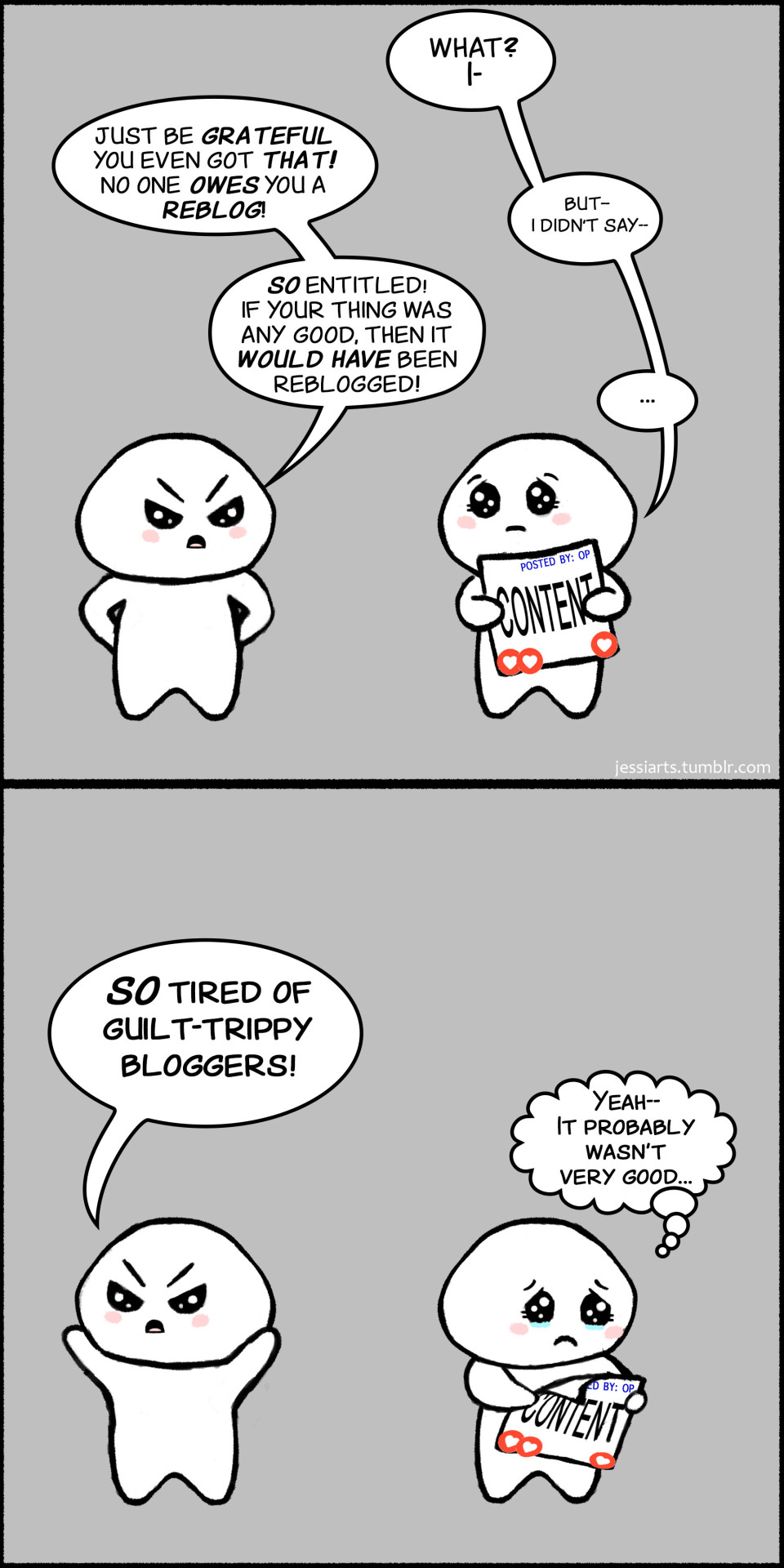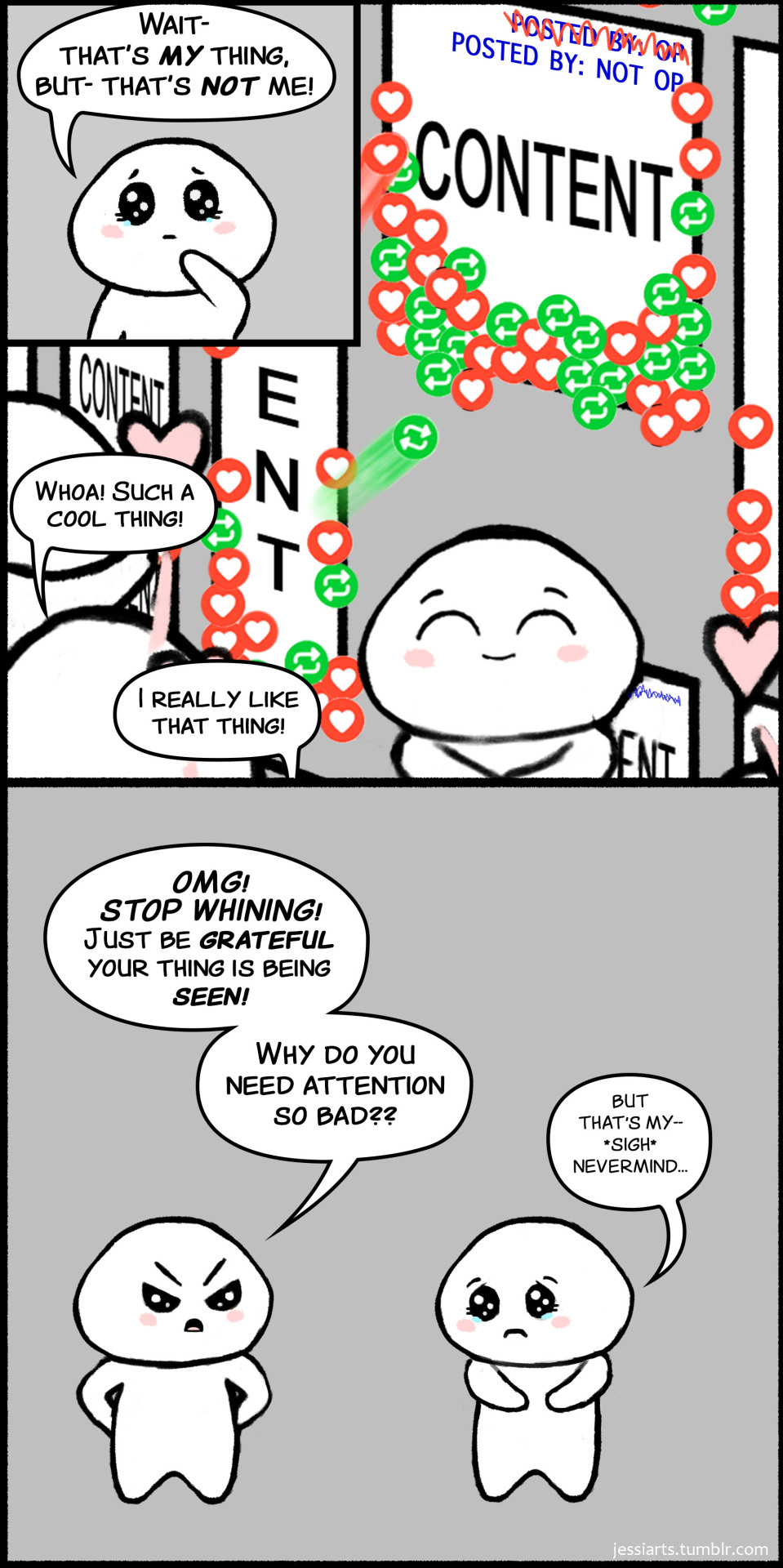Based On Actual Events









Based on actual events
More Posts from Arieso226 and Others
MAG-FUCKING-NIFICENT!!!

![The Lidérc [Hungarian Folklore]](https://64.media.tumblr.com/8b786c2eb3baf90966bade8bb2c7d913/6c10fb0625988ad8-5f/s500x750/b59248af1a83c1e9afc6f839e61deacc81c41b84.jpg)
The Lidérc [Hungarian folklore]
According to old Hungarian folklore, if you keep the first egg of a pitch-black hen warm under your arm until it hatches, the resulting chick will not be of a chicken but a lidérc. It will shapeshift into a creature closely resembling a human (but usually with one chicken foot) and will have sex with its owner, draining his life energy in the process. However, if the owner is a woman, the lidérc will suck her blood instead, which will cause diseases in the owner. In both cases, however, the creature will make a hoard of golden objects which it gets from an unknown source, making the owner rich. It will also perform labor and tasks that you ask it to do. Should you want to get rid of your lidérc, you have to ask it to perform an impossible task (like ‘tie a knot in a cloud’ or ‘empty all the water in this well using only a sieve’) in which case it will become so frustrated that it dies on the spot.
Another version of the story claims that the lidérc is a very tiny humanoid creature that may sometimes be found in your pocket, or in boxes or bottles. If you do own one of these, it is said your soul is taken by the creature, and you’re given supernatural powers in return.
Finally, some other stories claim the lidérc is an eldritch floating flame, but it is capable of assuming a human form once it touches the ground. Once it does so, its footprints will be those of a horse, despite having human feet. This creature is an omen of doom, as it brings illness and bad luck to those it encounters. Burning incense can keep it at bay and prevent if from entering one’s house. In eastern Hungary, this version of the creature haunts cemeteries at night but disappears without a trace as soon as the cry of a rooster is heard.
Sources: https://occult-world.com/liderc/ https://en.wikipedia.org/wiki/Lid%C3%A9rc (image source: https://occult-world.com/liderc/)
The tale of the Kuchisake-onna
The tale of the Kuchisake-onna dates back to the 17th to 19th century in Japan and is described as a woman mutilated, with her mouth split from ear to ear. The tale has various origins, claiming that she either was the adulterous wife or mistress of a great samurai that he became so outraged at hearing his wife was unfaithful that he slashed his wife’s mouth from ear to ear as punishment. Other tales claimed that she was once a great beauty and a jealous woman cut her; or that she had a dental procedure gone wrong. Either way, she died of the blood loss, and she came back as a malevolent spirit who appears to you and asks, ‘Am I pretty?’ Or, ‘Am I beautiful.’

She appears on a usually foggy night to a stranger, according to Kuchisake-Onna | Creepypasta Wiki | Fandom, haunting different places, wearing a mask that hides her face. She will stop a person and ask you directly, ‘‘Do you think I’m beautiful?’’ The person will usually answer, ‘‘Yes,’’ causing her to lower the mask to show off the hideous bloodied scars and ask, ‘‘What about now?’’ If you say no, scissors will appear in her hand, and she will slash you to death. If you still say yes, she will give you the same markings that show on her face, leaving you with the same fate. ‘‘There are several ways to prevent this terrible fate. One, to confuse Kuchisake-Onna by saying: "You are average." Two, present her with hard amber candy, which she'll take much delight in and let you go. Three, say ‘Pomade’ six times, and she will flee. Four, ask her if you are beautiful, which will confuse her hopefully long enough to escape. But be wary. She is said to be incredibly fast and will be unlikely to stop.‘‘

So if you see a strange woman on the street wearing a mask to stop you and ask the words, ‘Am I pretty/Do you think I’m beautiful?’’ I suggest that you adopt an NYC attitude (I can say this, I am from New York) and drop some candies before walking or sprinting away!
Conspiracies: Anthropology lenses
Discovering the dreaded conspiracy theory through an anthropological lens, these notes basically ask the question of where and how people created theories based on their mistrust of systemic agencies, or unexplainable events.
Secrecy in anthropology
NO. 1
Anthropology is the scientific study of human beings, and social anthropology is the study of behavior in certain societies. Studying patterns of behavior means studying how humans think, react, and evolve in society, but that also means understanding human secrecy through ethnographic research. But what is secrecy? In the ethnographic record, initiatory secrets often stand for the quiddity of culture, and the revelation of concealed realities is an organizing trope in much ethnographic writing.

NO. 2
‘’Intellectual historiography shows that the concept of secrecy has carried overwhelmingly negative, antisocial, and primitive connotations in learned Western discourses since the Enlightenment and that early anthropological research often supported such an implicitly social evolutionist stance. Secrecy and risk are closely connected. Secrecy engenders risk insofar as concealment entails the possibility of unwelcome revelation; non-circulation also creates a risk of its own, such as the breakdown of social relations or cultural reproduction. However, risk can also, gender secrecy as a strategy to manage perilous social relations. In practice, the casual relationship between secrecy and risk can be difficult to disentangle because the subjective experience of risk and the urgency of secrecy are constitutive--in both ritual secrecy and strategic secrets of state.’’

NO. 3
Secrecy excludes outsiders, but the power it attracts lies in the possibility it may be disclosed and revealed to those same outsiders. ‘’This contradictory centrifugal and centripetal forces push and pull on secrets. Possessing secrets can make people intensely aware of the fragility of knowledge and the precariousness of their custodial position. Revelatory and initiatory practices within secretive practice activities are often carefully calibrated to induce a sense of risk. It is paradoxical also because it ‘must be performed in a public fashion in order to be understood to exist.’ The revelation of concealment is a way of socially mobilizing the secret as a form of sociocultural capital without dispersing restricted knowledge.’’ Basically, secrecy is a personal form of belonging, of being included in the intimate affairs of family, friends, or just knowing about something that you didn’t previously.

Cool book

Currently reading this charmingly illustrated debut novel by Will Ottley. Mountain Garden is an inspiring fable crafted with care and the beauty of nature in mind. So far it’s a refreshing read featuring the themes of love, bravery, and intuition.

so I got into grad school today with my shitty 2.8 gpa and the moral of the story is reblog those good luck posts for the love of god
Imagine if they turned a black character white there would be riots…But can anyone recall riots over any of this?
The Assassination of MLK!
NO. 1
Martin Luther King. Jr, the famous civil rights leader, and the clergyman was assassinated at the Lorraine Motel in Memphis, Tennessee on April 4, 1968; he was rushed to St. Joseph’s Hospital where he ‘’died’’. James Earl Ray, a fugitive who had escaped Missouri State Penitentiary was arrested in London at Heathrow Airport, extradited back to the United States, and charged with the crime, where he pleaded guilty on March 10, 1969, and sentenced to 99 years in Tennessee State Penitentiary. He made several attempts to withdraw his guilty plea and be tried by a jury but was unsuccessful. He died in prison in 1998.
The King family do not believe he was murdered at the hands of this common criminal, but that the F.B.I and C.I.A had their hands involved, especially the head of the F.B.I, director J. Edgar Hoover, the Mafia, and Memphis police, as alleged by Lloyd Jowers, the owner of Jim Grill, a restaurant near the Lorraine Motel where the civil rights leader was shot. They believed that Ray was a scapegoat. In 1999, the family filed a wrongful death lawsuit against Jowers for $10 million. During closing arguments, their attorney asked the jury to award damages of $100, to make the point that ‘it was not about the money.’ During the trial, both sides presented evidence alleging a government conspiracy. The government agencies accused could not defend themselves or respond because they were not named as defendants.
Based on the evidence, the jury concluded Jowers and others were ‘’part of a conspiracy to kill King’’ and awarded the family of $100. The allegations and the findings of the Memphis jury were later rejected by the U.S Department of Justice in 2000 due to lack of evidence. ‘’The brutal death of the civil rights leader elicited a political reaction manifest in social disturbances across the nation. Numerous riots and lesser civil disturbances occurred as a direct aftermath of the killing. Several explanations for the disturbances appear obvious. The best--known civil rights leader in the nation had been murdered. For many, King had become a symbol of progressive change in policies concerning race relations and poverty. The killing also occurred within the context of increased interracial tension. More widespread rioting, looting, and burning--although less personal violence--took place in the prior summer than at any other time since the Civil War. Finally, diverse modes of political participation among African-Americans had emerged on a fairly massive scale. [I] argue that the assassination was a stimulus that led individuals to an emotional disengagement from the realm of political behavior. What I term political disengagement occurs when normally positive and latent diffuse sentiments toward the political system and its elements become negative.’’

-
 j4yb-rd liked this · 2 weeks ago
j4yb-rd liked this · 2 weeks ago -
 art-by-nyxx liked this · 2 weeks ago
art-by-nyxx liked this · 2 weeks ago -
 k9-kennedy liked this · 2 weeks ago
k9-kennedy liked this · 2 weeks ago -
 fridurwrites reblogged this · 2 weeks ago
fridurwrites reblogged this · 2 weeks ago -
 fridurwrites liked this · 2 weeks ago
fridurwrites liked this · 2 weeks ago -
 causingcasualchaos liked this · 2 weeks ago
causingcasualchaos liked this · 2 weeks ago -
 mayfly0678 liked this · 2 weeks ago
mayfly0678 liked this · 2 weeks ago -
 sarge1130 reblogged this · 2 weeks ago
sarge1130 reblogged this · 2 weeks ago -
 sarge1130 liked this · 2 weeks ago
sarge1130 liked this · 2 weeks ago -
 evil-alex liked this · 2 weeks ago
evil-alex liked this · 2 weeks ago -
 sweetphantombouquet liked this · 2 weeks ago
sweetphantombouquet liked this · 2 weeks ago -
 enragedbibliophile liked this · 2 weeks ago
enragedbibliophile liked this · 2 weeks ago -
 aceofthefandoms reblogged this · 2 weeks ago
aceofthefandoms reblogged this · 2 weeks ago -
 aceofthefandoms liked this · 2 weeks ago
aceofthefandoms liked this · 2 weeks ago -
 pain-changes-everything reblogged this · 2 weeks ago
pain-changes-everything reblogged this · 2 weeks ago -
 a-fangirl-08 reblogged this · 2 weeks ago
a-fangirl-08 reblogged this · 2 weeks ago -
 a-fangirl-08 liked this · 2 weeks ago
a-fangirl-08 liked this · 2 weeks ago -
 latenineblina liked this · 2 weeks ago
latenineblina liked this · 2 weeks ago -
 starful02 liked this · 2 weeks ago
starful02 liked this · 2 weeks ago -
 gregorsamsapost-trans-formation reblogged this · 2 weeks ago
gregorsamsapost-trans-formation reblogged this · 2 weeks ago -
 assassinsdragons reblogged this · 2 weeks ago
assassinsdragons reblogged this · 2 weeks ago -
 qwerttyycatz liked this · 2 weeks ago
qwerttyycatz liked this · 2 weeks ago -
 somaticknitter reblogged this · 2 weeks ago
somaticknitter reblogged this · 2 weeks ago -
 somaticknitter liked this · 2 weeks ago
somaticknitter liked this · 2 weeks ago -
 enteringmyworldnow reblogged this · 2 weeks ago
enteringmyworldnow reblogged this · 2 weeks ago -
 hi-hi-cakey reblogged this · 2 weeks ago
hi-hi-cakey reblogged this · 2 weeks ago -
 hi-hi-cakey liked this · 2 weeks ago
hi-hi-cakey liked this · 2 weeks ago -
 reileth reblogged this · 2 weeks ago
reileth reblogged this · 2 weeks ago -
 reileth liked this · 2 weeks ago
reileth liked this · 2 weeks ago -
 certainmoneypapertaco reblogged this · 2 weeks ago
certainmoneypapertaco reblogged this · 2 weeks ago -
 maxolotl7089 liked this · 2 weeks ago
maxolotl7089 liked this · 2 weeks ago -
 i-like-moss liked this · 2 weeks ago
i-like-moss liked this · 2 weeks ago -
 honestlyshywhispers-blog liked this · 2 weeks ago
honestlyshywhispers-blog liked this · 2 weeks ago -
 taroris reblogged this · 2 weeks ago
taroris reblogged this · 2 weeks ago -
 grubbed-up-goblen reblogged this · 2 weeks ago
grubbed-up-goblen reblogged this · 2 weeks ago -
 grubbed-up-goblen liked this · 2 weeks ago
grubbed-up-goblen liked this · 2 weeks ago -
 harblkun liked this · 2 weeks ago
harblkun liked this · 2 weeks ago -
 dolphin-writer reblogged this · 2 weeks ago
dolphin-writer reblogged this · 2 weeks ago -
 lesbian-vegeta reblogged this · 2 weeks ago
lesbian-vegeta reblogged this · 2 weeks ago -
 mrjeeefffftheallosaures9 liked this · 2 weeks ago
mrjeeefffftheallosaures9 liked this · 2 weeks ago -
 itsvriskabitch liked this · 2 weeks ago
itsvriskabitch liked this · 2 weeks ago -
 gamecents liked this · 2 weeks ago
gamecents liked this · 2 weeks ago -
 impulseimpact reblogged this · 2 weeks ago
impulseimpact reblogged this · 2 weeks ago -
 impulseimpact liked this · 2 weeks ago
impulseimpact liked this · 2 weeks ago -
 godzillafandoesart reblogged this · 2 weeks ago
godzillafandoesart reblogged this · 2 weeks ago -
 godzillafandoesart liked this · 2 weeks ago
godzillafandoesart liked this · 2 weeks ago -
 spidergroott liked this · 2 weeks ago
spidergroott liked this · 2 weeks ago -
 spruguloo liked this · 2 weeks ago
spruguloo liked this · 2 weeks ago -
 adikavita reblogged this · 2 weeks ago
adikavita reblogged this · 2 weeks ago -
 skulkiee liked this · 2 weeks ago
skulkiee liked this · 2 weeks ago
26-year-old Anthro-Influencer Anthropology, blogger, traveler, mythological buff! Check out my ebook on Mythology today👉🏾 https://www.ariellecanate.com/
208 posts
